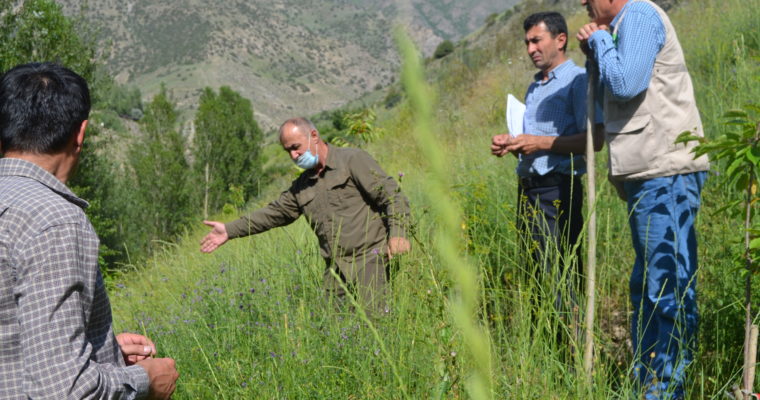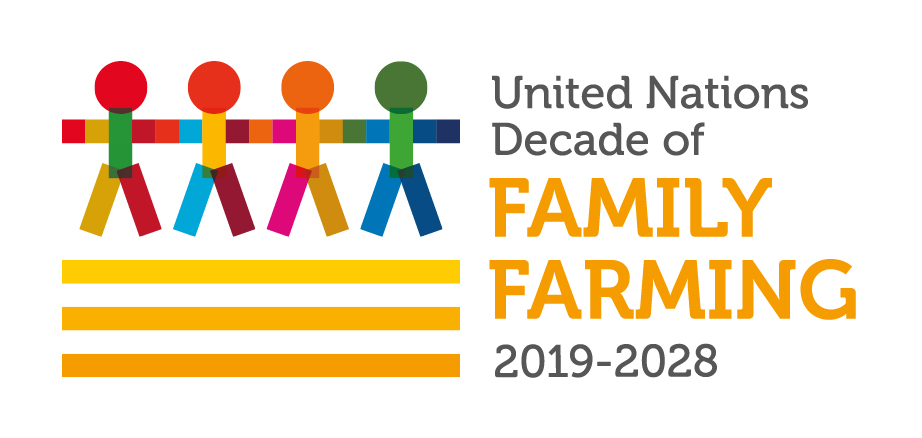AFA member NADF supports the rehabilitation of pastures and forestry in Tajikistan through its participation in the Zarafshon Basin Project, a project supported by the European Union (EU) and in cooperation with WHH (Welthungerhilfe) and Landell Mills. These partners organized a training on the “Rehabilitation of native pasture grasses by collecting and broadcasting” in the upper catchments of Zarafshon Valley, Tajikistan on 1-2 July 2019.
The Zarafshon Basin Project, supported by the European Union (EU) and in cooperation with WHH (Welthungerhilfe) and Landell Mills, organized a training on the “Rehabilitation of native pasture grasses by collecting and broadcasting” in the upper catchments of Zarafshon Valley, Tajikistan on 1-2 July 2019.
Native plants play a vital role in biodiversity conservation; in improving the life of rural people as these are sources of food, medicine, clean air, water, hay, and, forage; and more importantly in climate change adaptation.
Developing native grasses in rural areas means improving the environment and thus, supporting the life of village inhabitants. Native plants play an important role in the rehabilitation of eroded pasture areas and environmental conservation and they also provide multiple benefits to the people and the wildlife. Native plants contribute greatly to a healthy soil and water in the rural areas. Native plants are sustainable in unstable weather condition caused by global warming because they can easily adapt to local conditions.
Other advantages of seeding native plants for rehabilitation are:
- Local communities know native grasses very well as they have been using these for long a period of time.
- Some of the local plants are source of food, medicine, and even additional income for the rural people.
- Seeding native plants is inexpensive, fast, easy, and does not require special knowledge.
- Most of the native plants are perennial, has strong roots system, and good for erosion control.
- Native plants have already evolved in local conditions. Many species of native grasses and legumes easily grow, are resistant and can easily adapt to local weather conditions.
- The play important role for rehabilitation of any types of erosion and improvement of soil fertility.
- Native grasses are staple for livestock grazing. They provide shelter and food for livestock, wildlife, and they also support pollination.
- Native species that are less palatable can be used as winter hay or developed for other uses.
- They do not require watering, chemical pesticides, or special care. Native plants require less water and are almost resistant to drought.
- Native plants help keep the surrounding air clean.
- Native plants promote biodiversity and stewardship of the locality’s natural heritage.
- Seeding promptly after disturbance provides an almost continuous ground cover.
- Dense root mats formed by some grass species are favorable for stabilizing soil and developing soil structure.
- Deep-rooted species are highly suitable in reducing soil moisture level where slope stability or site wetness is a problem.
- Some species establish rapidly and yet are short-lived, thereby reducing competition over the species that live for a longer period.
This activity was conducted in cooperation with the National Association of Dekhan Farms (NADF). NADF is a member of the Asian Farmers’ Association (AFA) in Tajikistan.




Comments are closed